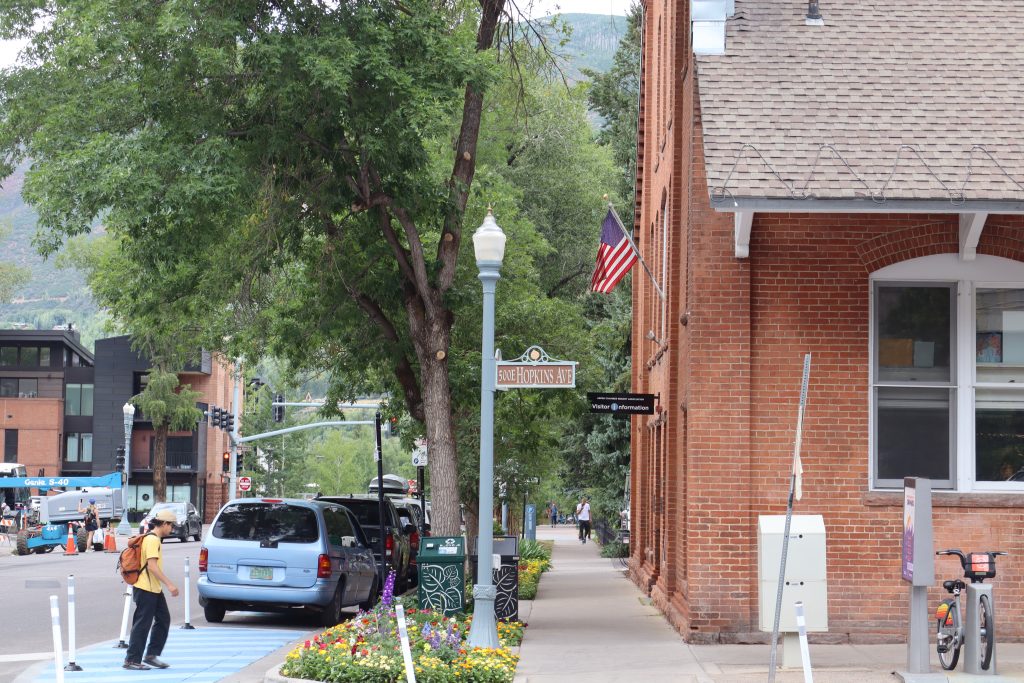Tourists spent more money in Colorado in 2024, but travel experts say 2025 is off to a shaky start

Madison Osberger-Low/The Aspen Times
Last year was a good year for tourism in Colorado: visitors were spending more money, visiting more places and helping create jobs for local economies. The same can’t be said about the 2025 tourism season so far.
Tourism contributed $28.5 billion to Colorado’s economy in 2024, over $100,000 more than in 2023, thanks to a 2.3% increase in visitation, according to an annual report commissioned by the Colorado Tourism Office and conducted by Longwoods International and Dean Runyan Associates.
Roughly 95.4 million people visited the state in 2024 compared to the 93.3 million visitors recorded in 2023, which Longwoods International Travel USA credits partially to an increase in day travelers. State and local tax revenue increased by 1.3% to a combined $1.9 billion in 2024, with approximately 40.5% of the tax revenue generated by travel-related spending coming from visitor-paid local sales taxes.
Increased visitation and traveler spending in the state also supported 188,510 jobs across the state, including over 4,000 new jobs generated from direct travel.
Early 2025 data, however, suggest that increasing competition and uncertainty related to federal policy changes are putting pressure on Colorado’s thriving tourism industry.
Hotel occupancy has declined by 2% and hotel revenues have decreased by 2.7% through June 2025, according to the report. Short-term rental occupancy declined by approximately 10% during the first quarter of 2025.
International tourism to Colorado also took a big hit during the first half of 2025. A significant portion of Canadian travelers are reconsidering travel to the United States over tariffs and political statements, according to a Canadian travel sentiment study from April 2025.
Of the Canadian survey respondents who indicated they would be changing their travel plans to the United States within the next 12 months, 79% cited tariffs and 64% cited political statements by U.S. leaders as reasons for reconsidering their travel. The exchange rate between the U.S. and Canadian dollar also remains a key factor, with 47% of respondents taking it into consideration for their vacation plans.
International travelers make up nearly 8-10% of Colorado’s tourism economy, according to Colorado Tourism Office Director Tim Wolfe. With other parts of the country struggling with international visitation numbers, Wolfe said states could soon become more competitive with the dollars of domestic tourists.
“As those areas struggle a little bit with the international visitation, they’re going to be going after our domestic travel much more aggressively to try to fill that void that we may not be seeing, but they’re definitely seeing some drops in the international travel,” Wolfe said during a July 30 webinar discussion of the survey results.
The capture rate of domestic overnight visitors has also been declining in the last four years, jumping from 2.3% of total overnight visitation compared to the rest of the country in 2019 to 1.8% in 2024.
“We actually expect that trend to continue, especially given what’s going on internationally, as well as the fixed budgets that the state has,” Wolfe said.
On the plus side, marketing from the Colorado Tourism Office has proven effective for attracting more visitors to Colorado. Leading travel and market research company SMARI found that Colorado’s 2024 winter marketing campaign earned the highest return on investment ever for a winter campaign when compared to all destinations they evaluate across the United States.
In addition, when comparing frequented activities for tourists to Colorado, the state notably outpaces the U.S. norm for visitor participation in outdoor activities like hiking, backpacking and visiting national parks. With changes to the budget for national park services and staffing reductions under the Trump administration, however, impacts to Colorado’s stable park visitation numbers are yet to be seen.
Mountain regions see mixed revenue results from 2024 tourism
States are competing harder for tourism dollars, and Colorado isn’t standing out as much as some other states.
Travel-related spending increased 4.2% nationally in 2024, while Colorado saw a smaller 0.3% increase from $28.4 billion in 2023 to $28.5 billion in 2024. This is notably lower than the state’s 4.4% annual rate of growth for travel spending from 2014 to 2024.
Travelers spent approximately $13.9 billion in the Denver region alone in 2024, making up 48.8% of the statewide total.
The “Rockies Playground” — which includes High Country and Western Slope areas like Summit, Eagle, Pitkin and Garfield counties — generated the second-highest travel spending in Colorado at $4.4 billion, the second-highest earnings at $1.5 billion, and roughly $328 million in revenue from state and local taxes. Travel to these counties supported over 30,000 jobs.
“The Great West” region — which encompasses other parts of the Western Slope, including parts of Eagle, Garfield, Grand, Jackson, Moffat, Rio Blanco and Routt counties — generated $1.5 billion in travel spending, $112 million from state and local taxes, and earned $540 million from tourism in 2024.
Despite the increase in spending from visitors to the Western Slope, where they’re spending money is shifting slightly. Retail sales, food stores, transportation and gas all saw decreased visitor spending compared to last year, ranging from a 0.1% decrease to a 12% decrease. Earnings, however, were positive across the board.
The majority of these travel industry earnings — 54% — are distributed to the Denver region, with almost 15% going to the Rockies Playground. Travel earnings make up a much higher portion of total earnings in the Rockies compared to the Denver region, with earnings from travel making up over 11% of total earnings in the High Country versus only 2.6% in Denver.
The Great West region, on the other hand, saw less total spending from tourism in 2024 than it did the year prior by roughly 3.2%. The drop accompanies 22% less spending on hotels in the area, and decreased purchasing in retail, transportation, arts and food services. The Great West region’s earnings still came out in the green, with a 4.2% growth between 2023 and 2024.
Visitors are older, wealthier, and spendier
Travel to Colorado is becoming an activity for the wealthy. In 2023, only 18% of visitors had an annual income between $100,000 and just under $150,000. One year later, that demographic now makes up 23% of tourists in the state. Those in the lower income brackets are also making up a smaller portion of visitors, with 31% of visitors making less than $50,000 in 2024 compared to 34% in 2023.
Reasons for travel to Colorado have also shifted slightly since 2023. The number of tourists visiting friends and relatives in the state is down four percentage points to 34%. Marketable trips, however, have gained five percentage points year over year.
More travelers to Colorado in 2024 chose to stay in hotels than in 2023, with the reverse being true about visitors who stay in the homes or their friends or relatives. Although 34% of visitors identified seeing friends/family as the main purpose of their trip, only 16% of overnight visitors chose to stay with friends or family as their accommodation.
In 2024, the average age of a tourist in Colorado was 42 years old, up slightly from 41.2 in 2023. Although Colorado outpaces the U.S. in younger visitors between the ages of 18 and 34, it lags in attracting the 55-and-up crowd, which is expected to have a greater economic impact on tourism in the future as it becomes the age demographic with the largest disposable income, according to Brian Screptock, director of client services at Longwoods International.
In 2024, roughly 23% of travel parties had a member who required accessibility services for overnight trips to Colorado — five percentage points above the U.S. norm. The quantity of these visitors who expressed being satisfied with the state’s ease of accessibility, 48%, is also significantly higher than the 13% who expressed being satisfied just one year earlier.
“Nowhere else in the country is this occurring,” Screptock said. “The work that the state is doing on accessibility, it is noted, your travelers are noticing this, and it is obviously a benefit to you.”
Aspen area included in ‘release zone’ for wolverine reintroduction
The Aspen area has been included in one of three general release zones for the reintroduction of wolverines into the state, according to preliminary information from Colorado Parks and Wildlife’s developing plan.










